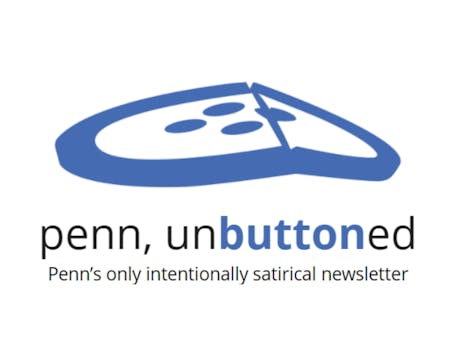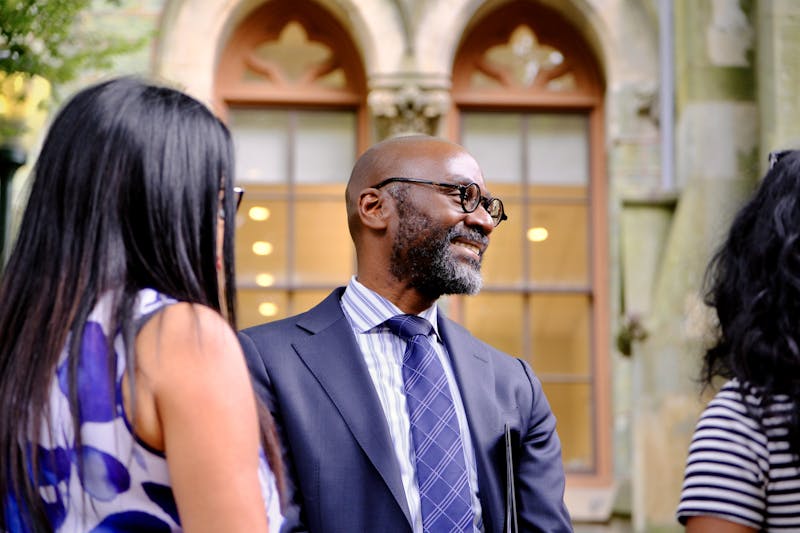
As part of a long-term plan to shift the purpose of the Penn Tower Hotel from commercial to medical, the University Health System has begun construction of several new radiology suites in the hotel, forcing the closure of its restaurant, bar and catering services.
The restaurant and bar were closed to give construction workers access to utility lines in their former space, a process which officials estimate will take seven months.
As a result of the closures, 45 employees lost their jobs.
The Health System's plan is designed to shift the hotel's focus from a commercial operation to serving the needs of patients at the Hospital of the University of Pennsylvania, a significant portion of the hotel's clientele.
The Health System originally took over the Penn Tower, located on Civic Center Boulevard at 34th Street, in 1996.
According to Health System administrators, the addition of radiology suites to the Penn Tower is necessary in order to increase the efficiency of the system's radiology department.
"Our inpatient and outpatient radiology is currently mixed and our volume is way more than we can handle," said Will Ferniany, senior vice president of administrative and network services at the Health System.
He noted that the high volume of patients at HUP could be lessened by housing the outpatient section of the radiology department in the Penn Tower while keeping the inpatient section at the hospital.
The new radiology suites will be located on the mezzanine level of the hotel and, once construction is complete, retail options will return to the hotel's lobby.
While University officials maintain that they handled the closures in compliance with union contracts, Charles Murphy, vice president of the worker's union representing the hotel employees, said he was "extremely disappointed" with the treatment his workers received.
"We have very long-term people who worked there," Murphy said, noting that some of the employees who lost their jobs worked at the Penn Tower for as long as 25 years. The University "didn't take into consideration the sweat equity the [employees] put into the hotel. They're only looking at the dollar value."
Penn Tower Manager Jane McKinney declined to comment, referring requests for comment to Health System officials.
Without its restaurant and bar, University officials say the Penn Tower is no longer a "full-service hotel."
Ferniany explained that the hotel no longer has ballroom, restaurant, room service and meeting room facilities.
The hotel section of "this building is only four floors deep, with only 75 rooms," he said. "We're trying to change it to more of a Hampton Inn, meaning good clean rooms and continental breakfast. It's more for the patients of CHOP and HUP."
Health System spokeswoman Rebecca Harmon also said that the Penn Tower's new focus is on serving the patients and their families.
"Obviously we have people coming from all over and it's just not an easy drive to get back home, so some patients and family will stay over," she said. "It's very useful in meeting the needs of the patient."
According to Ferniany, the Penn Tower has been working with the real estate contractor University City Associates to make retail suggestions for the new vacancies in the lobby.
But after many of his workers were let go following the restaurant's closure, Murphy said he was upset that the Penn Tower will most likely place a new food and beverage operation in the vacant area.
"Why didn't they try to figure out a way to maintain [the old employees]?" Murphy said. "They certainly didn't take any moral high ground."
In 1996, when the Health System initially took over the Penn Tower, University officials examined a variety of options to change the hotel's function, such as eliminating the facility's boarding option.
But according to Ferniany, the financial problems that plagued the Health System shortly thereafter, along with the introduction of other hotels in the surrounding area, made the options infeasible.
The Daily Pennsylvanian is an independent, student-run newspaper. Please consider making a donation to support the coverage that shapes the University. Your generosity ensures a future of strong journalism at Penn.
DonatePlease note All comments are eligible for publication in The Daily Pennsylvanian.







